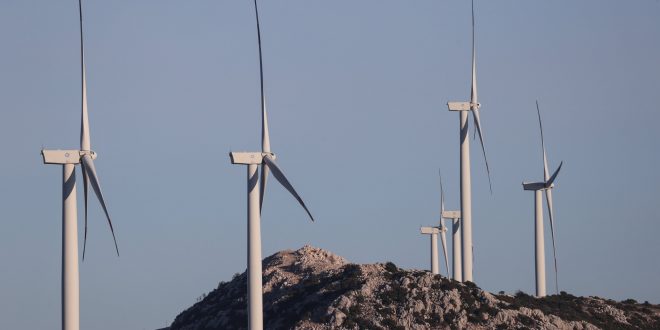Power generation from wind turbines was the second-largest source of electricity in the United States on March 29, behind only natural gas and surpassing both coal and nuclear power generation for the first time on record, the U.S. Energy Information Administration (EIA) said on Thursday.
On March 29, wind turbines in the Lower 48 states produced 2,017 gigawatt-hours (GWh) of electricity, EIA’s Hourly Electric Grid Monitor showed. Daily wind-powered electricity had surpassed coal-fired and nuclear electricity generation separately on other days earlier this year but had not surpassed both sources on a single day, the administration noted.
The U.S. wind power capacity installation has soared in recent years to the point where wind capacity exceeded nuclear capacity in September 2019.
Currently, wind power ranks as the third-largest source of generating capacity in the United States, behind natural gas-fired generators and coal-fired generators, the EIA said.
Despite surpassing nuclear capacity more than two years ago, wind still generated less electricity than nuclear because the two technologies differ in their utilization.
The average capacity factor of U.S. wind generators was 35 percent in 2021, much lower than the average capacity factor of nuclear generators, 93 percent in 2021. Nuclear generators are designed to run at or near full output, which they typically do.
Despite beating both coal and nuclear on a single day, wind power generation in the U.S. is not expected to surpass either coal or nuclear generation on a monthly basis in any month this year or next, the EIA’s most recent Short-Term Energy Outlook forecast showed.
The U.S. surpassed more than 200 GW of total operating utility-scale clean power capacity in 2021, the American Clean Power Association (ACP) said in February, but warned that “significant policy issues continue to hold back growth for the industry and threaten the country’s ability to meet emissions goals.”
Growth in wind power installations could slow this year due to ongoing supply chain issues and market volatility which has been exacerbated by the ongoing Russian war in Ukraine.

 Iran Energy News Oil, Gas, Petrochemical and Energy Field Specialized Channel
Iran Energy News Oil, Gas, Petrochemical and Energy Field Specialized Channel



